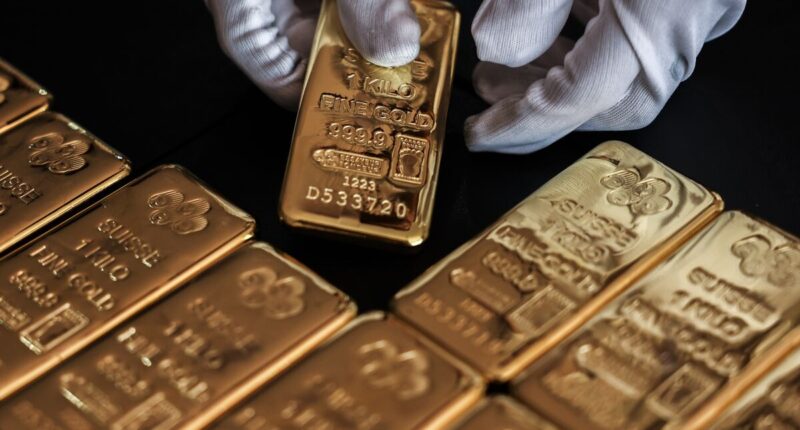The gold market (XAU/USD) is exhibiting breathtaking momentum, clinching a fifth consecutive day of gains and solidifying its position at a fresh all-time peak. During Wednesday’s Asian trading session, the precious metal held steadfast near $2,850 per troy ounce, a historic milestone first achieved the previous day. This sustained rally is fueled by growing conviction that the Federal Reserve is poised to pivot its monetary policy, a sentiment ignited by recent signs of a cooling U.S. labor market.
The primary catalyst behind this record-setting run is a series of softer-than-anticipated U.S. economic reports. Market participants are increasingly pricing in the likelihood of imminent interest rate cuts from the Fed, a environment in which non-yielding assets like gold become significantly more attractive.
“The resilience in gold is nothing short of remarkable,” remarked Tai Wong, an independent metals trader, in an interview with Reuters. “It effortlessly erased early session losses following a tepid U.S. Job Openings and Labor Turnover Survey (JOLTS) report. This data certainly doesn’t hinder the case for a rate cut next month.”
The latest JOLTS data presented a mixed but ultimately dovish picture. While job openings inched up slightly to 7.23 million in August from a revised 7.21 million, the underlying trends signal a slowdown. Notably, the hiring rate dipped to 3.2%, marking its lowest point since June 2024, suggesting employers are becoming more cautious. This aligns with the broader narrative of a labor market that is gradually softening, a key factor the Fed considers when setting policy.
The Macroeconomic Tailwinds for Gold
The inverse relationship between interest rates and gold is a fundamental driver of this rally. As expectations for Fed rate cuts grow, the opportunity cost of holding gold—which pays no interest—diminishes. This makes bullion a more compelling safe-haven asset for investors. For a deeper dive into how central bank policies influence commodity prices, the Investopedia guide on How Interest Rates Affect the Gold Market offers a comprehensive analysis.
Furthermore, gold is often sought as a hedge against economic uncertainty and potential market volatility. A cooling labor market can spark fears of an economic downturn, prompting investors to reallocate capital into traditional stores of value. This dynamic is a classic feature of risk-off sentiment, and its impact on asset allocation is detailed in resources from The World Gold Council, a leading authority on the gold market, which discusses the role of gold in Strategic Asset Allocation.
With the market’s focus now sharply trained on upcoming U.S. employment data, including the critical Non-Farm Payrolls report, any further evidence of economic deceleration will likely serve as rocket fuel for gold’s already blistering ascent. The breach of the $2,850 level has opened the door for a test of even higher psychological barriers, with $2,900 now firmly in the sights of bullish investors.










